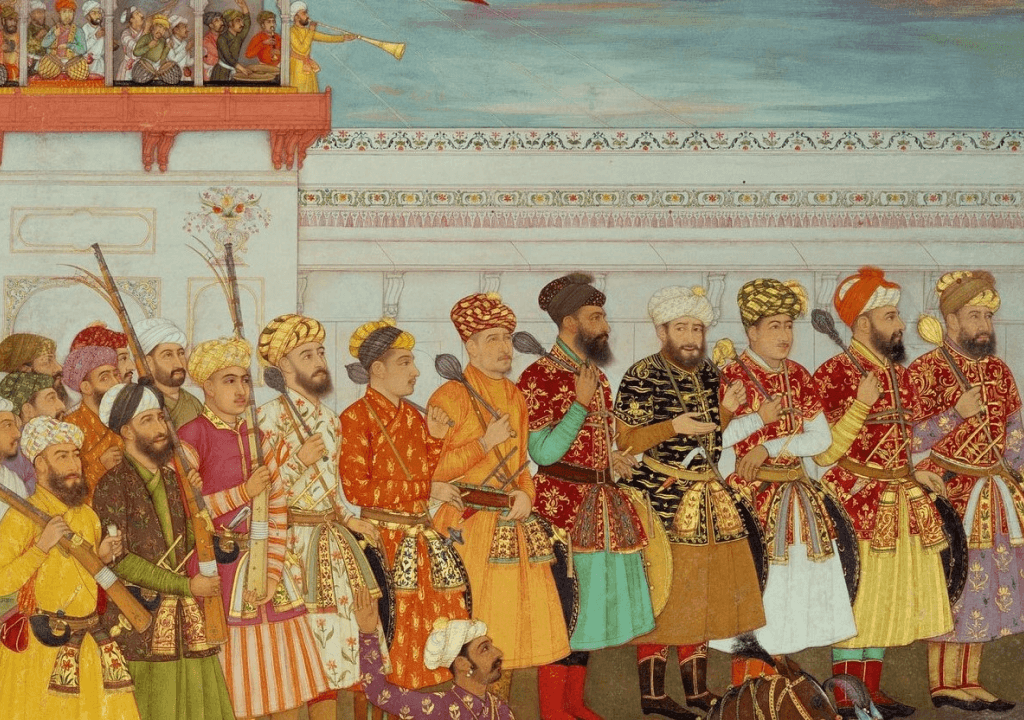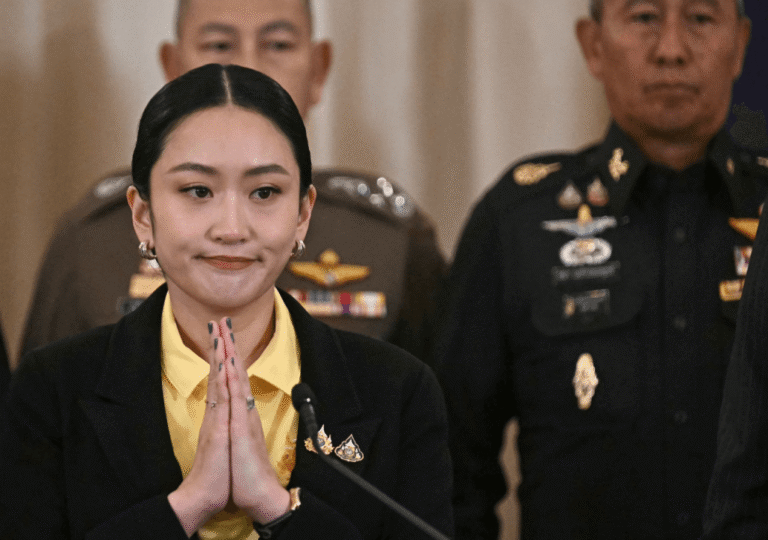The Indian government, led by the well-known Hindu nationalist Bhartiya Janata Party (BJP), is steadfastly dedicated to eliminating all traces of colonialism. Now that the party is running for an uninterrupted third term, it is actively leading the revival of the Hindu identity in India. The nation’s legacy is being reclaimed, as evidenced by programs like renaming roads and ignoring structures from the colonial era.
This renewed vigor against colonial influences extends to the Mughals, an Islamic dynasty historically associated with the Ottomans. Despite arguments that many Mughal rulers had Indian roots and lineage, they are increasingly perceived as symbols of Ottoman colonization. Hindu Nationalists fervently assert that the Mughals were more oppressive and exploitative than the British colonialists. Consequently, there is a growing clamor for the removal of Mughal legacies from Indian soil, mirroring the elimination of British colonial identifiers.
The Indian subcontinent, renowned for its ancient civilizations and great kingdoms like Maurya, Kalinga, and Chola, was predominantly ruled by Hindu, Buddhist, and Jain kings. The advent of Muslim invasion in the Indian subcontinent is traditionally traced back to 712 AD, following the conquest of Sindh and Multan by the Umayyad Caliphate under the leadership of Muhammad ibn al-Qasim. This marked the beginning of a gradual conquest that saw successive Muslim rulers establishing their dominance.
Muslim dynasties, most notably the Mughal Empire and the Delhi Sultanate, rose to prominence in the subcontinent starting in the late 12th century. From the middle of the 14th century to the end of the 18th century, a number of other Muslim kingdoms ruled over South Asia, including the Deccan Sultanates, Bahmani, Bengal, Gujarat, Malwa, Mysore, and Carnatic. These Muslim dynasties were bound together by the Islamic faith and Persianate culture, while having different origins.
While Sharia formed the primary basis for the legal system in the Delhi Sultanate, with rulers like Firuz Shah Tughlaq and Alauddin Khilji notably repelling Mongol invasions, others like Akbar adopted a secular legal system, promoting religious neutrality. The Muslim rule in India profoundly influenced the cultural, linguistic, and religious landscape of the subcontinent. Persian and Arabic vocabulary seeped into local languages, giving rise to modern Punjabi, Bengali, and Gujarati, alongside the emergence of new languages like Urdu and Deccani, which served as official languages under Muslim dynasties. This era also witnessed the birth of Hindustani music, Qawwali, and the evolution of dance forms such as Kathak. Additionally, religions like Sikhism and Din-e-Ilahi emerged from the synthesis of Hindu and Muslim religious traditions.
The transition away from Muslim rule in modern India is predominantly denoted by the Battle of Plassey in 1757 and the onset of the British Raj in 1857, though remnants persisted in regions like Hyderabad State, Junagadh State, Jammu and Kashmir State, and other minor princely states until the mid-20th century. Present-day Bangladesh, Maldives, and Pakistan are Muslim-majority nations within the Indian subcontinent, while India hosts the world’s largest Muslim minority population, exceeding 180 million.
Historians and British records generally classify these Muslim kingdoms as integral parts of India, while Indian historians and Hindu organizations view them as periods of colonial rule. Their stance is supported by various factors, including the predominantly Turkish, Persian, Afghan, or Mongol heritage of many early rulers who often exhibited suppressive behavior towards Indian knowledge, architecture, monuments, and temples. Iconic centers of learning like Nalanda and Takshashila were destroyed, temples were desecrated or converted to Islamic styles, forced conversions and marriages occurred, and mass killings were perpetrated. The preference for Persian, Arabic, and Turkish over Indian languages further alienated the indigenous population. Additionally, the harsh treatment of the Hindu kings during the Islamic golden age in India, and the resistance of kingdoms like the Marathas and Vijayanagara against Islamic rule, underscore the disconnect between these rulers and the Indian identity.
Hindu historians argue that these Islamic kingdoms were more aligned with Ottoman and Persian empires, lacking a true Indian identity. Their oppressive actions against the indigenous Hindu populace and exploitative taxation structures are cited as evidence of their colonizing nature. They advocate for a focus on pre-Islamization Indian history, considered the golden age of Indian civilization, asserting that Indian history need not be sympathetic towards Islamic rulers.
The Indian National Congress led government, which came to power after India gained independence from British rule in 1947, took a compassionate view of the Mughals, viewing them as fellow Indians rather than Turkish conquerors. The unwillingness to explore the more sinister facets of Mughal governance in textbooks was perceived as an effort to placate the Islamic vote bank, which constitutes a substantial portion of the Congress party’s support base.
In earlier times, India and Pakistan faced disputes over the succession of the Mughal era. Pakistan, established as a Muslim state following the partition of India, was perceived by some as the inheritor of the Mughal legacy, a view not universally accepted by the Congress government. However, the dynamics shifted significantly with the landslide victory of the Hindu nationalist Bhartiya Janata Party (BJP) in the 2014 general election. The BJP’s focus shifted towards highlighting the drawbacks of Mughal rule. Initiatives were launched to shed light on instances of persecution endured by the Indian populace during the Mughal era, which had previously been overlooked by earlier administrations.
The BJP actively advocated for the reconstruction of Hindu temples and monuments, especially in locations where mosques had been erected during the Mughal era, often replacing Hindu temples. Prime examples include the reconstruction of the Ayodhya temple atop the former site of the Babri Masjid. Extensive efforts were undertaken to revive numerous temples that had fallen into disrepair during the Islamic period. Surveys were conducted on mosques constructed during the Mughal era to uncover traces of Hindu heritage. Furthermore, initiatives were launched to revitalize the exploration and commemoration of pre-Islamic Indian history, particularly the periods of Hindu, Buddhist, and Jain rule in the subcontinent. Plans were discussed for the restoration of the Nalanda University, which had been demolished during the reign of Islamic rulers.
Social media campaigns aimed at erasing the Islamic identity of India and promoting its Hindu identity gained traction. A visible outcome of this campaign was the renaming of cities and roads that had been named during the Mughal and Congress periods to reflect a Hindu heritage. Notable examples include the renaming of Allahabad to Prayagraj in 2018, Hoshangabad to Narmadapuram in 2021, and Aurangabad to Chhatrapati Sambhaji Nagar in 2023. Many more cities are proposed for name changes, reflecting a broader trend towards reclaiming Hindu heritage in India. Some proposed renamings include Patna to Patliputra, Ahmedabad to Karnavati, and Hyderabad to Bhagyanagaram.
According to some political analysts, the animosity towards the Mughals may gradually transform into animosity towards Muslims in general. Despite the fact that many Indian Muslims are converted, there is a growing sentiment that portrays them as invaders or sympathizers of invaders, potentially fueling hostile sentiments. With a population of nearly 200 million, any discord between this significant demographic and the Indian government could pose a substantial threat to the nation. However, the Modi government remains resolute in its efforts to diminish Islamic influence and promote Hindu identity. With expectations of a third term, further Hinduization of the country is anticipated, evident in actions such as renaming India to Bharath and proposed changes to the constitution. It is evident that India is transitioning from the modern secular identity implemented by the Congress to a pre-Islamic Hindu nationalist one. This transformation aligns with the BJP’s manifesto to revive the Hindu identity of the nation, utilizing the lingering animosity towards Mughal rule as a driving force.








